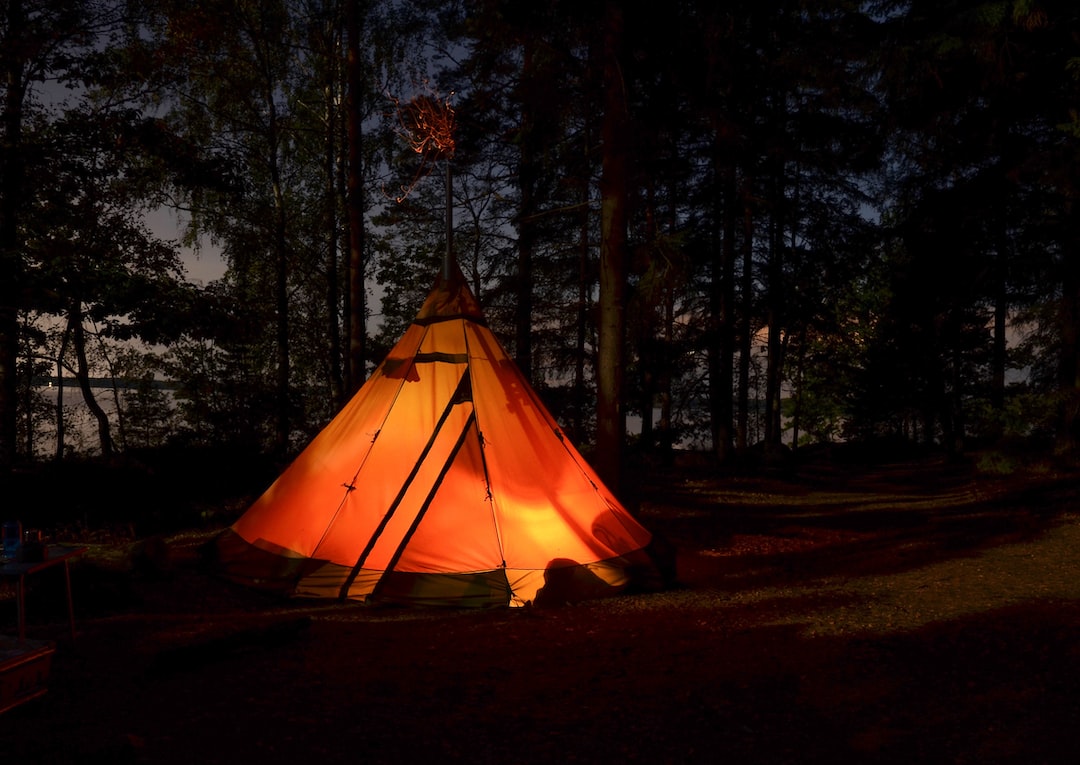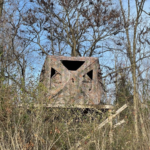Are you an avid hunter looking for the best tipi tent to take on your next outdoor adventure?
Whether you’re a beginner or experienced outdoorsman, choosing the right tipi tent is essential. From understanding what a tipi tent is and its benefits, to setting up your own and using it with a stove – there are many factors that go into selecting the best option for your needs.
We will cover all of this in detail so you can make an informed decision when shopping around for the perfect tipi tent.
What is a Tipi Tent?
A tipi tent is a traditional, conical-shaped shelter used by many Native American tribes. For centuries, this conical-shaped abode has been utilized by various Indigenous tribes and remains a popular choice for hunters, athletes, and nature lovers.
History of Tipi Tents:
Tipis were first created by the Plains Indians in North America as portable dwellings that could be quickly set up or taken down to facilitate seasonal migrations across the continent.
They were constructed using animal hides stitched together with sinew and supported by wooden poles tied together at the top.
Today’s modern tipis are made from lightweight materials such as canvas or nylon but still retain their classic shape and design.
Design and Structure:
A typical tipi consists of three main parts – an outer cover, poles to hold it up, and an inner liner for insulation.
The cover is usually made from a waterproof material such as canvas or vinyl while the poles are typically made from wood or aluminum tubing. The inner liner helps keep out drafts during cold weather conditions while also providing some additional insulation against heat loss in warmer climates.
There are several advantages to using a tipi over other types of tents including its portability; due to its simple construction it can be easily broken down into smaller components for transport which makes it ideal for backpacking trips where space may be limited.
Their aerodynamic shape allows air to move freely and efficiently, thus providing great stability even in strong winds while offering plenty of headroom. Finally, they provide ample headroom so you don’t have to worry about feeling cramped inside your shelter no matter how tall you may be.
A tipi tent is a traditional Native American shelter that has been used for centuries, and its unique design offers many advantages. Hunters who desire comfort in the wild may find a tipi tent to be an optimal selection, due to its advantageous features.
Benefits of Using a Tipi Tent
Tipis, historically used by Native Americans, are still favored among adventurers today. They provide excellent weather protection, ventilation and airflow, and are incredibly durable.
Weather Protection:
Tipi tents are designed to keep out the elements while providing plenty of space inside. The canvas fabric of tipi tents provides a waterproof, windproof and UV-resistant barrier to protect from the elements.
Additionally, it can be treated with a water-repellent finish that helps keep rain off your tent walls in wet conditions. This makes them ideal for camping during inclement weather or on extended trips in remote areas where you may not have access to other forms of shelter.
Ventilation & Airflow:
Tipi tents also offer great ventilation thanks to their tall structure and large opening at the top of the tent wall which allows air to circulate freely throughout the interior space. This keeps condensation from building up on your gear as well as reducing humidity levels so you don’t wake up feeling stuffy or sweaty in the morning.
Plus, having an open fire inside your tipi will help create even more air circulation if needed – just make sure you always use caution when doing this.
Finally, tipis are made with heavy duty materials that can withstand years of wear and tear without showing signs of deterioration or damage. The canvas fabric is strong enough to resist tears while still being lightweight enough for easy transport; meanwhile its seams are reinforced with grommets so they won’t come apart over time either.
With proper care and maintenance such as storing away from direct sunlight, these tents can last decades making them a great investment for any hunter looking for reliable shelter on their next outdoor adventure.
Using a tipi tent offers numerous benefits, including weather protection, ventilation and airflow, and durability. Setting up the tent is easy when you follow these simple steps to choose the right location and assemble your poles and canvas covering.
How to Set Up a Tipi Tent
When selecting a site for your tipi tent, ensure it is flat and free of any hazardous objects that could damage the canvas or poles. Make sure there are no sharp objects nearby that could puncture your canvas cover or poles.
Additionally, avoid areas with large trees as they can be difficult to maneuver around when assembling your tent.
Assembling the Poles and Canvas Covering:
Once you have chosen the right spot for your tipi tent, start by laying out all of the poles in an organized fashion so you know which pieces go where.
Then, begin connecting each pole using rope or twine until all of them are linked together securely at the top forming a cone shape structure. Next, carefully drape the canvas covering over this structure and secure it with additional rope if needed.
Once everything is secured firmly in place, tie off any excess ropes and you are ready to enjoy your new shelter.
Constructing a tipi tent is an uncomplicated task, yet it’s essential to devote sufficient time to ensure everything is properly arranged and secure. With that in mind, let’s look at how you can safely use a stove with your tipi tent setup.
Tips for Using a Tipi Tent with a Stove
For camping trips, selecting a stove that is lightweight yet powerful enough to cook meals should be taken into consideration. Smaller stoves tend to be lighter, thus making them simpler to move. However, they may not be able to provide enough heat or cook large meals.
Larger stoves can provide more heat and cook larger meals but will add extra weight that must be carried on the trail.
Additionally, some models of tents require specific types of stoves so make sure you research what type of stove is compatible with your tent before purchasing one.
Proper Ventilation and Safety Precautions:
Before using a stove inside your tipi tent, ensure that there is adequate ventilation by leaving all windows open during use. Ensure that carbon monoxide buildup is avoided by keeping adequate ventilation in the tent while using a stove.
It’s also important to keep flammable materials away from the stove at all times as well as never leave it unattended while burning fuel or operating any kind of flame-producing device inside the tent structure itself.
Overall, using a stove in your tipi tent can be an enjoyable and safe experience if you take the necessary precautions.
Lightweight materials are also important when choosing a tipi tent; Dyneema fabric, Peax vs Seek Outside, and other lightweight options should all be considered to ensure maximum comfort while camping.
Lightweight Materials for Tipi Tents
Lightweight materials are essential for a tipi tent as they can reduce the overall weight of the tent and make it easier to carry.
Dyneema fabric is one of the most popular lightweight materials used in tipi tents due to its high strength-to-weight ratio, durability, and water resistance. It’s also highly resistant to UV rays and other environmental factors which makes it an ideal choice for outdoor use.
Peax is another brand that uses this lightweight material that has been gaining popularity among outdoors enthusiasts due to its breathability and flexibility.
Seek Outside also offers some great options for lightweight fabrics with their advanced composite laminates being particularly noteworthy for their superior performance in all weather conditions.
Other materials such as silnylon or cuben fiber are also worth considering when looking at lighter alternatives for your tipi tent setup. It’s essential to research thoroughly when selecting the fabric that best suits your needs and budget. With careful consideration, you’ll be able to find the perfect material that meets both your needs and budget.
FAQs in Relation to Best Tipi Tent
What is the best tipi tent?
The best tipi tent for hunting and outdoor recreation is the Kodiak Canvas Flex-Bow Deluxe 8-Person Tent. It features a waterproof, breathable canvas shell that keeps out rain and wind while providing ventilation to keep you comfortable in all climates.
The heavy duty poles provide stability in high winds, while the flexible bow frame allows for easy setup and takedown. Ideal for groups or families of up to eight, this tent offers plenty of space and stability in all climates.
Are teepee tents worth it?
Teepee tents can be a great option for hunters and outdoors enthusiasts looking to add an element of rustic charm to their camping experience. Teepee tents are usually quite roomy, lightweight and effortless to assemble, making them a great choice for those who’d rather spend less time constructing their shelter than ensuring its sturdiness.
Despite their convenience, teepee tents may not be suitable in areas with strong winds or heavy rains due to their lack of protection compared to other types of tents. Ultimately it depends on your individual needs and preferences; if you’re looking for something unique that will provide a comfortable night’s sleep then teepee tents could definitely be worth it.
What is the difference between tipi and teepee?
Tipis and teepees are both types of shelters that have been used by Native Americans for centuries. Tipis are conical, portable tents made from animal skins or birch bark sewn together with sinew thread and supported by wooden poles.
Teepees are similar in design to tipis but typically feature a more cone-like shape with an extended smoke flaps at the top. Both structures provide protection from the elements, however, teepees often require less materials to construct than tipis due to their simpler construction process.
Additionally, while both structures can be moved easily when taken down, it is much easier to move a teepee than a tipi due to its lighter weight and smaller size when disassembled.
What is the best tipi material?
The best tipi material depends on the environment and intended use. For cold climates, canvas is usually recommended due to its superior insulation properties.
However, for wetter conditions such as rain or snow, a waterproof synthetic fabric like nylon may be preferable. For more lightweight applications, polyester is often employed where portability and weight are essential.
Ultimately, it’s important to consider your specific needs when selecting a tipi material for optimal performance and comfort.
Conclusion
In conclusion, the best tipi tent for hunters and outdoors enthusiasts is one that offers lightweight materials like Dyneema, sets up quickly and easily, provides ample ventilation with a stove option if desired. With these features in mind you can be sure to find the perfect tipi tent for your next hunting adventure.



